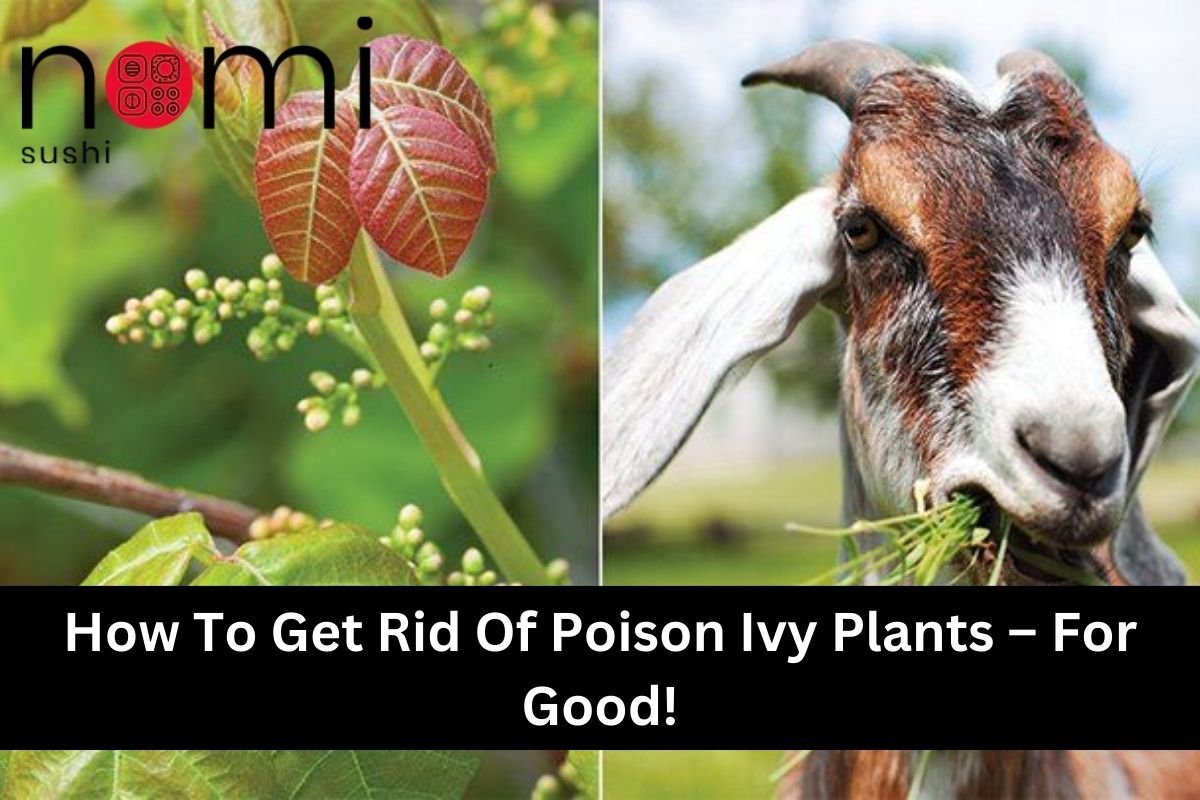How To Get Rid Of Poison Ivy Plants – For Good! : As soon as it comes into contact with the skin, poison ivy can cause painful rashes and itching, making it a constant annoyance. The removal of poison ivy plants from your property involves a lot of hard work and attention to detail in order to prevent them from coming back. The following is a list of effective procedures that can be used to permanently remove poison ivy:
How To Get Rid Of Poison Ivy Plants – For Good!
Identification: Make sure you are able to correctly identify poison ivy before you attempt to remove it. Poison ivy can be difficult to remove successfully. There are three glossy green leaves that are characteristic of poison ivy, and it can grow either as a vine or as a shrub. Always keep in mind the proverb that says, “Leaves of three, let it be.”
Protective Gear: It is important to take precautions because poison ivy contains urushiol, which is an oily substance that can irritate the skin. Wear protective clothes, such as long sleeves, pants, gloves, and shoes with closed toes, whenever you are working with poison ivy or removing it from the environment. If you want to avoid getting urushiol particles in your eyes and affecting your respiratory system, you might think about using goggles and a mask.
Manual Removal: Whn dealing with small areas of poison ivy, eradication by hand can be particularly successful. It is important to remove the complete root system of the plants before pulling them from the ground. You can use gardening gloves, a shovel, or a hoe to accomplish this. To stop the spread of the disease, put the plants that have been removed into a plastic bag and dispose of them in the appropriate manner.
Herbicides: Chemical herbicides are an efficient method for controlling huge infestations of poison ivy plant. You should look for herbicides that are specially designated for the management of poison ivy and have active components like glyphosate or triclopyr within their formulation. When applying herbicides, meticulously follow the directions provided by the manufacturer and take efforts to prevent causing damage to plants that are desirable in the surrounding area.
Smothering: In order to completely eradicate poison ivy, it is frequently necessary to undergo multiple treatments. It is important to keep a close eye on the treated area and to reapply herbicides as required in order to eradicate any regrowth. It is important to have patience and perseverance because it may take multiple sprays to entirely eradicate the poison ivy vegetation.
Professional Removal : Smothering is a method that does not include the use of chemicals and can be considered an environmentally friendly way to get rid of poison ivy. The afflicted area should be covered with layers of cardboard or newspaper, and then a thick layer of mulch or soil should be applied thereafter. It is because of this that the poison ivy is deprived of sunlight, which stops it from growing. It is important to guarantee that the plants die off entirely by keeping the area covered for a number of months.
Regular Maintenance: If you are dealing with a significant or persistent infestation of poison ivy, you might think about engaging a professional landscaping or pest management agency. They are equipped with the knowledge and tools necessary to remove poison ivy from your property in a manner that is both safe and effective, hence reducing the likelihood of exposure and subsequent regrowth.
Education: When you have successfully removed poison ivy from your home, it is important to take preventative measures to ensure that it does not crop up again. Your yard should be inspected on a regular basis for any new growth, and any poison ivy plants that appear should be removed as soon as possible. For the purpose of preventing poison ivy from taking root, you might want to think about growing dense ground cover or putting garden cloth.
Dispose Properly: It is important to educate yourself and others about the identification of poison ivy as well as the risks associated with it. Children and animals should be taught to identify poison ivy plants and to steer clear of them in order to prevent inadvertent exposure. Through the dissemination of information, you can contribute to the reduction of the likelihood of future encounters with poison ivy.
Conclusion
Take Proper Measures to Dispose of Plants It is vital to take appropriate measures to dispose of the plants in order to prevent the spread of poison ivy, regardless of whether you are removing the plants manually or with herbicides. Composting or burning them could result in the release of urushiol into the atmosphere; thus, it is best to dispose of them by placing them in plastic bags and throwing them away in the garbage.
